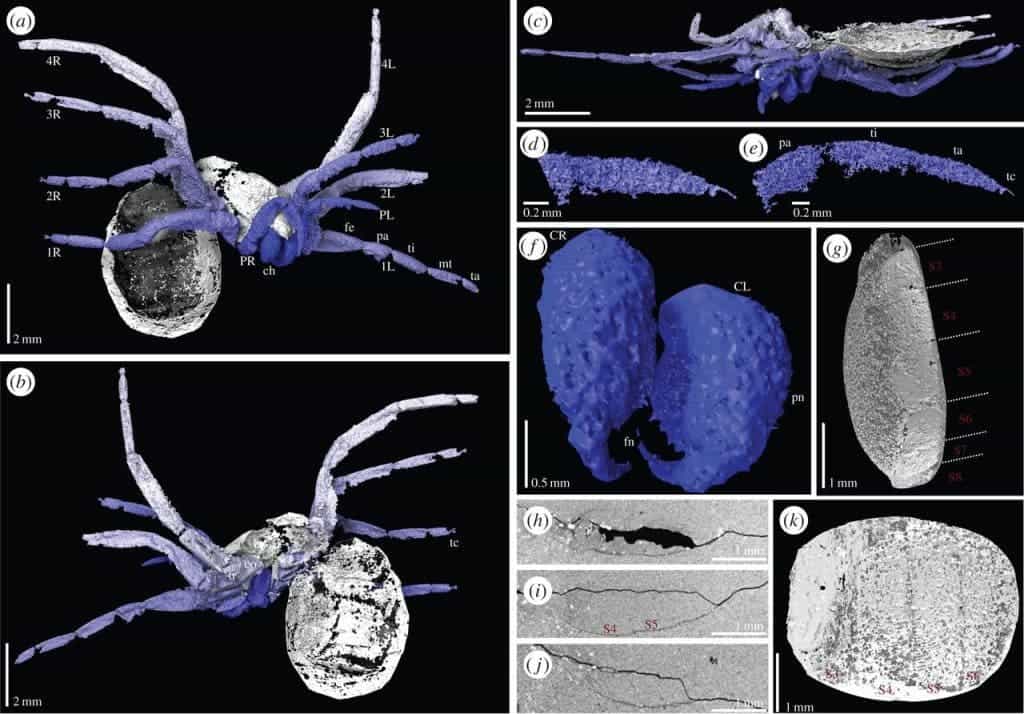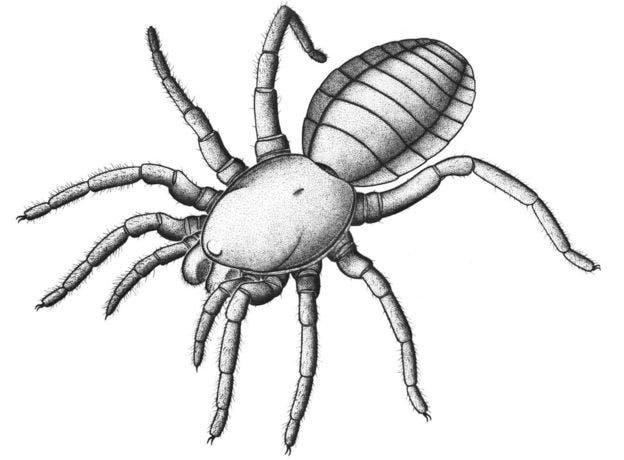Scientists have identified a 1.5 cm creature that predates the dinosaurs by 100 million years. While not exactly a spider, the tiny beast is the closest relative to spiders, but its lineage is extinct.

Spiders are basically ubiquitous. They can be found on every continent except for Antarctica and in every environment ever – except in the air and under water. But for the big and diverse group that they are, we still don’t know many things about them, as researchers write in the study:
“Spiders are an important animal group, with a long history. Details of their origins remain limited, with little knowledge of their stem group, and no insights into the sequence of character acquisition during spider evolution.”
Now, they found a new specimen which might shed some light on their early evolution. Well, the specimen was found long ago in France, but it was just now properly analyzed, with CT scans, a technique that is used more and more on fossils and mummies. Idmonarachne brasieri, the arachnid, was among “a box full of fossils” that Dr Garwood’s co-author Paul Selden, from the University of Kansas in the US, had borrowed from the Museum National d’Histoire Naturelle in Paris in the 1980s. As it so often happens to fossils, it was simply forgotten and ignored for years and years.
“By CT scanning it, you can actually extract the full front half of the animal from the rock, to try and better understand its anatomy,” Dr Garwood said in an interview.
The animal looks like a spider. It has eight spidery limbs, and some imposing jaws, but they lack a distinct spidery characteristic:
“Although distinctly spider-like in habitus, this remarkable fossil lacks a key diagnostic character of Araneae: spinnerets on the underside of the opisthosoma.” In English, this means they can’t produce silk.

Spinerets are silk-spinning organs commonly located on the underside of a spider’s abdomen, to the rear. That’s what the study is trying to say, albeit in biological jargon. Spiders have two, four, six or eight spinerets, and this fossil has none. This means that this creature split from the evolutionary branch of the spiders (or spiders broke from it), but the two are closely related.
“Our creature probably split off the spider line after [Attercopus], but before true spiders appeared,” Garwood said. “The earliest known spider is actually from the same fossil deposit – and it definitely has spinnerets. So what we’re actually looking at is an extinct lineage that split off the spider line some time before 305 million years ago, and those two have evolved in parallel.”
He also checked if this was just an accident and the fossil dropped the spinerets after or during fossilization, but this wasn’t the case.
“We had to consider the fact they could have fallen out, and just left a hole in the abdomen,” Dr Garwood said. “You need a quite high-resolution scan to be able to spot that distortion.”
They christened the creature after a colleague: Martin Brasier, an Oxford palaeobiologist who passed recently in a car accident.






